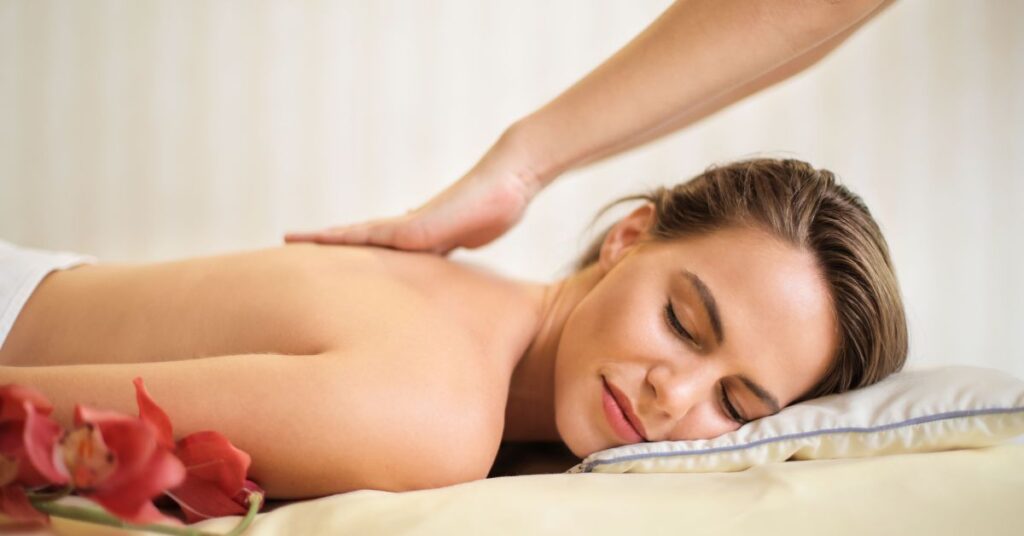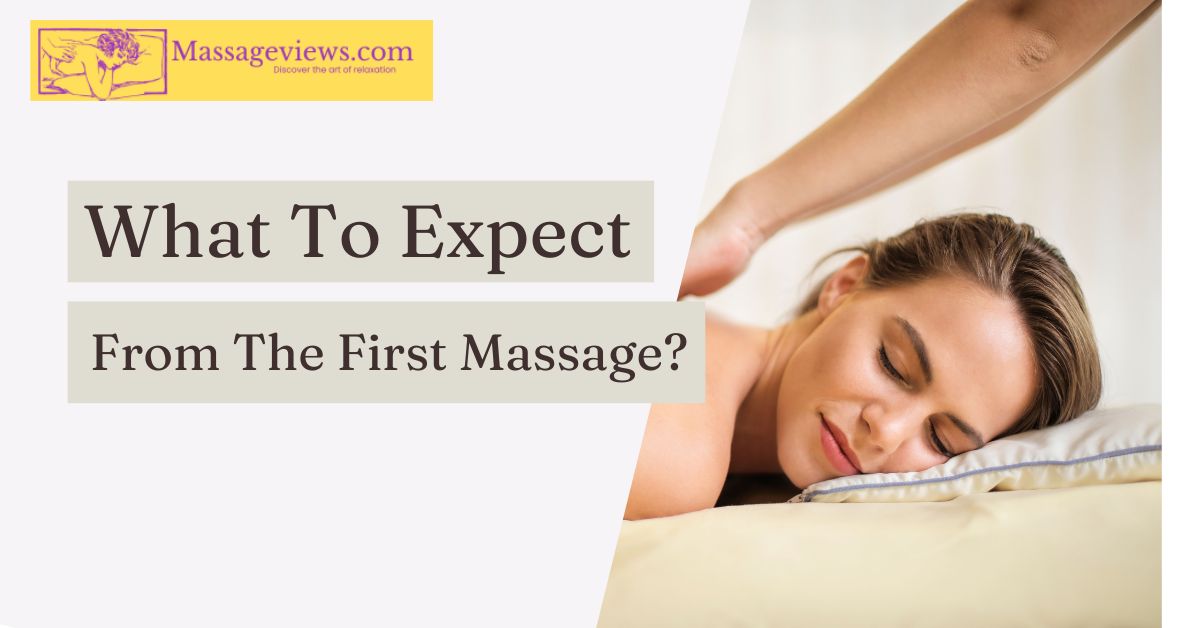If you’re gearing up for your first massage, you’re in for a treat. Wondering, “What to expect from the first massage?” Well, picture this: a tranquil atmosphere, soothing music, and skilled hands working their magic to melt away tension.
As you embark on this journey of relaxation and well-being, anticipate a personalized experience tailored to your preferences. Your therapist will discuss your needs, ensuring you feel comfortable and informed throughout. From gentle strokes to targeted pressure, each technique is designed to leave you feeling refreshed and revitalized. Get ready to unwind and discover the blissful surprises your first massage has in store!
Table of Contents
When getting a full body massage, what do you wear?
Comfort is crucial when getting ready for a full-body massage. Wear loose, airy clothing to improve your ability to unwind. For a full body massage, many people prefer to undress fully because it gives the therapist unfettered access to work on all of their muscle groups. Wearing underwear, however, is okay if it helps you feel more comfortable.
You can feel easy knowing that licensed therapists are trained to protect your privacy and uphold a safe atmosphere. To ensure your modesty is always maintained, you will also be given a sheet or towel to cover yourself with during the massage. So grab a comfortable piece of clothing and be ready to go on an ultimate relaxation vacation!
What happens during a massage?
During a massage, you can expect a personalized and therapeutic experience aimed at promoting relaxation and addressing specific concerns.

The process typically unfolds as follows:
Consultation:
Before the massage begins, you’ll have a consultation with the therapist. They will discuss your medical history, any current physical issues, and your preferences. This ensures they tailor the massage to your unique needs.
Choosing a Massage Style:
There are various massage styles, such as Swedish, deep tissue, or aromatherapy. Based on your consultation, the therapist will recommend or you can choose the style that best suits your goals, whether it’s relaxation, pain relief, or stress reduction.
Undressing and Draping:
Depending on the type of massage, you may be asked to undress fully or leave on some clothing. Regardless, you will be appropriately draped with a sheet or towel throughout the session, ensuring your comfort and modesty.
Starting the Massage:
You will lie on a massage table, and the therapist will begin the session. They might start with broad, flowing strokes to warm up the muscles before moving on to specific techniques based on your needs. The pressure applied can vary, and communication with your therapist is crucial to ensure it’s comfortable for you.
Techniques and Movements:
The therapist will use an array of techniques, including kneading, tapping, friction, and stretching, depending on the chosen style. Deep tissue massages may involve more intense pressure to target deeper layers of muscle.
Focus on Problem Areas:
If you have specific areas of tension or pain, the therapist will pay extra attention to those areas, using specialized techniques to alleviate discomfort and improve mobility.
Aromatherapy and Oils:
In some cases, aromatherapy or essential oils may be incorporated into the massage for added relaxation and sensory pleasure. Make sure to inform your therapist of any allergies or sensitivities.
Closing the Session:
Towards the end of the session, the therapist will gradually reduce the intensity of the massage. They may leave the room briefly to allow you to dress in private.
Post-Massage Guidance:
After the massage, your therapist might offer advice on post-massage care, such as staying hydrated or performing specific stretches to enhance the benefits of the session.
Feedback and Future Recommendations:
Your therapist may seek feedback on your experience and provide recommendations for future sessions based on your individual needs and goals.
What body feel during a massage?
Head and Neck:
As the therapist’s skilled hands begin to work, you’ll likely experience a sense of relief in your head and neck. Tension often accumulates in these areas due to stress or poor posture. Gentle strokes and circular motions can alleviate headaches and release the tightness that may be lingering in your neck muscles. Many people find this part of the massage especially soothing, allowing them to let go of mental stress and promoting a deep sense of relaxation.
Shoulders and Back:
The shoulders and back bear the brunt of daily activities and stress. During a massage, the therapist may use a combination of kneading and long, flowing strokes to release tension in the muscles along your spine. If you carry stress in your shoulders, you might feel knots and tightness being worked out. Deep tissue techniques can target stubborn areas, promoting better blood circulation and providing relief from chronic pain or stiffness.
Limbs and Feet:
The arms, legs, and feet also receive attention during a full-body massage. Your limbs are gently stretched, and the muscles are kneaded to enhance flexibility and circulation. If you’ve been on your feet for extended periods, the massage of the lower limbs can be particularly rejuvenating. Reflexology techniques may be applied to the feet, targeting specific pressure points believed to correspond to different organs and systems in the body. The overall effect is a sense of lightness and improved mobility in your limbs, leaving you with a feeling of overall well-being.
What after feeling?

After a massage, the “after feeling” is often a harmonious blend of relaxation and revitalization. Your muscles, once tense and fatigued, now feel loose and supple. The soothing touch and manipulation of tissues have stimulated blood circulation, promoting a sense of warmth and well-being throughout your body. As you stand up, you may notice increased flexibility and a lightness in your step.
The calming effects extend beyond the physical; your mind feels clear, and stress seems to have dissipated. It’s not uncommon to experience a heightened awareness of your body and a serene mental state. Whether you seek the massage for relaxation, pain relief, or both, the afterglow is a testament to the therapeutic benefits, leaving you ready to face the world with a renewed sense of balance and vitality.
Benefits of massage?
- Stress Reduction: Massage is a powerful stress reliever, promoting the release of endorphins and reducing cortisol levels. The soothing touch and rhythmic movements induce a state of relaxation, alleviating mental and emotional stress.
- Muscle Tension Relief: One of the primary benefits is the release of muscle tension. Massage techniques, such as kneading and stretching, target knots and tightness, enhancing flexibility and range of motion. This is particularly beneficial for those with chronic muscle pain.
- Improved Circulation: The manipulation of muscles and tissues during a massage stimulates blood flow and lymphatic circulation. Improved circulation facilitates the delivery of oxygen and nutrients to cells, promoting overall health and aiding in the removal of toxins.
- Enhanced Sleep Quality:
Regular massage has been linked to improved sleep patterns. The relaxation induced by massage helps regulate sleep hormones, making it easier to fall asleep and experience more restful nights. - Boosted Immune System:
Massage has been shown to support the immune system by increasing the activity of natural killer cells. This can contribute to a stronger defense against illnesses and a quicker recovery. - Mood Elevation: The release of endorphins and the reduction of stress hormones contribute to an improved mood. Massage therapy can be an effective complementary treatment for conditions like anxiety and depression.
- Joint Flexibility and Mobility: Massage helps increase joint flexibility by reducing stiffness and promoting fluid movement. This is especially beneficial for individuals with conditions like arthritis or those recovering from injuries.
- Improved Posture: Addressing muscle imbalances and tension through massage can contribute to better posture. By releasing tight muscles and realigning the body, massage helps prevent or alleviate postural issues.
- Pain Management: Whether dealing with chronic pain conditions or acute injuries, massage can provide effective pain relief. It helps soothe sore muscles, reduce inflammation, and promote overall comfort.
- Mind-Body Connection: Massage fosters a heightened awareness of the mind-body connection. The focused attention on the body during a session can promote mindfulness, reducing mental chatter and promoting a sense of overall well-being.
Conclusion
To sum up, getting your first massage is an exhilarating adventure into the world of well-being and relaxation. Your comfort is the primary concern throughout the entire experience, from the minute you enter the peaceful setting to the professional hands relieving your stress. A customized session that meets your specific needs is made possible by the personalized consultation, which guarantees that your choices are taken into account.
The first massage promises to be a nice surprise, whether you’re looking for stress treatment, muscle tension release, or just a peaceful getaway. A restored sense of equilibrium, a symphony of calming strokes, and therapeutic advantages that go well beyond the massage table are what to expect.
Frequently Asked Questions About Massage
How long does a typical massage session last?
The duration of a massage session can vary, but a standard session is usually 60 to 90 minutes. However, shorter or longer sessions may be available depending on your preferences and the type of massage.
Can I talk during the massage?
The session is your time to relax, and the general guideline is to minimize conversation. However, communication is key. Feel free to provide feedback about pressure, areas of focus, or any discomfort you may experience.
Are there specific health conditions that prevent me from getting a massage?
In some cases, certain health conditions may require modifications or precautions. It’s crucial to inform your therapist about any medical conditions, injuries, or concerns you have before the session begins.
